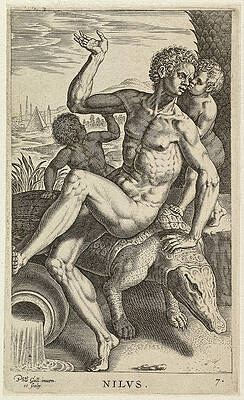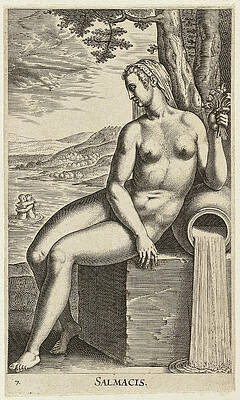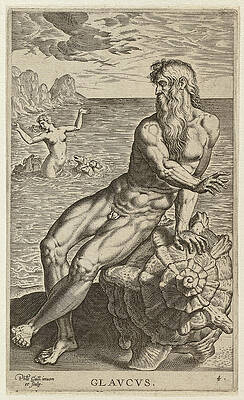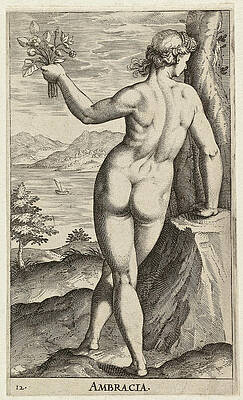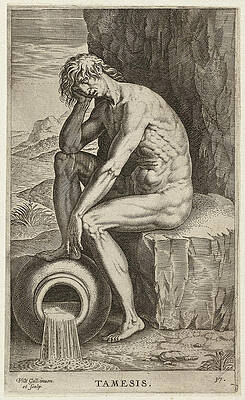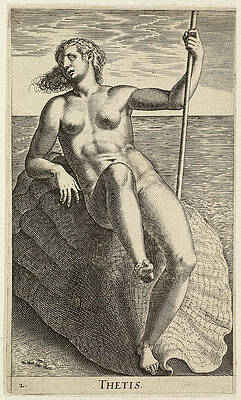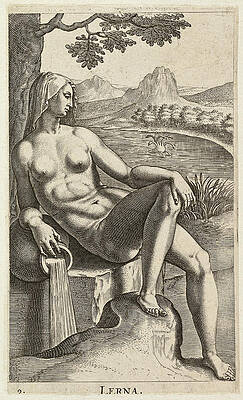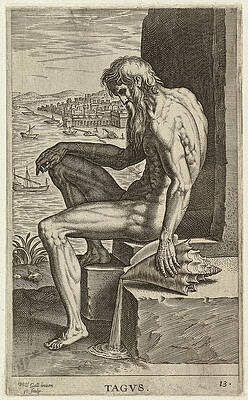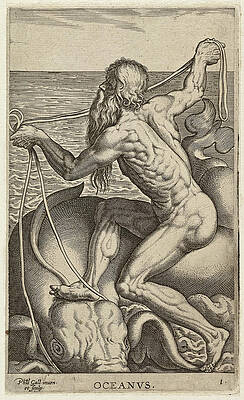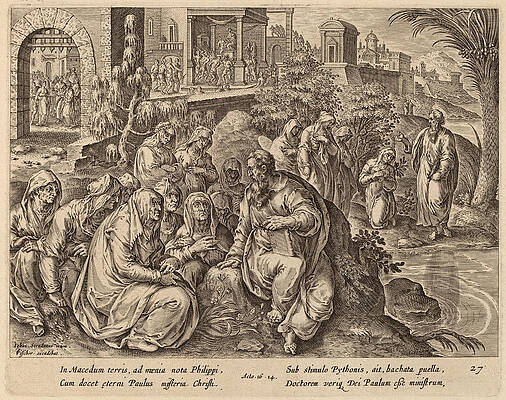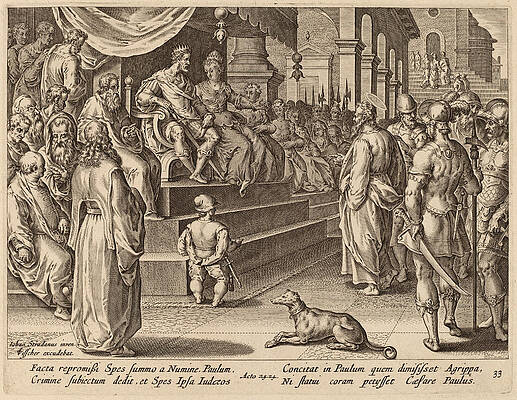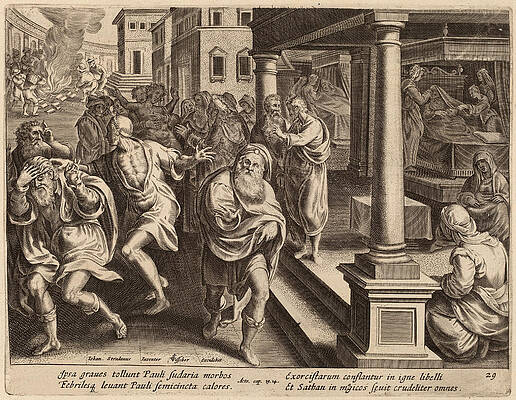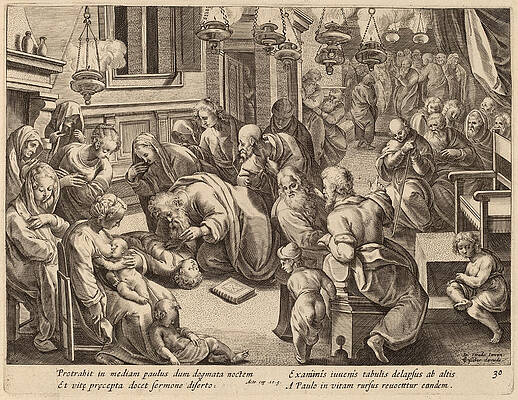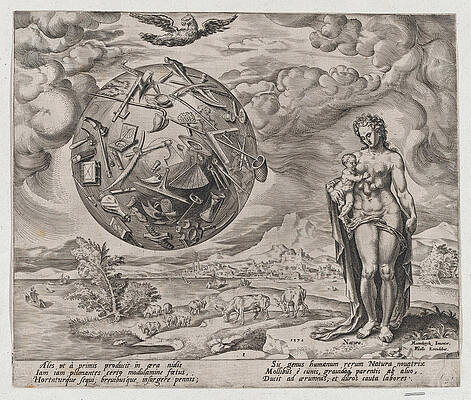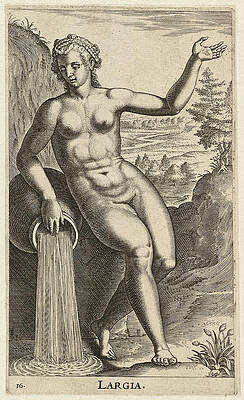Philip Galle
The Lighthouse at Alexandria
Charity from The Virtues
Veritas from Proposopographia
Saint Paul Heals the Lame Man at Lystra
The Statue of Jupiter at Olympia
Ratio from Proposopographia
Pentecost
The Vision of Saint Peter
Aganippe
The water nymph Liriope, mother of Narcissus. In the background Narcissus
The river god Tibris of the Tiber seated on a stone block. A cornucopia in his hands
The water nymph Padusa of the river Po
The river god Rhenus of the Rhine, seated on a stone. A bunch of grapes in his hand
The river god Nilus, seated on a crocodile
The river god Scaldis ofthe Scheldt, seated on a stone block. A shell in his hand
The river god Acis Acireale, seated on a stone. In the background his beloved, the nymph Galatea
The river god Danubius of the river Danube, seated on a stone
The sea god Proteus, leaning against a water jug from which fish flow. In the background a port city
The water nymph Hippoccrene
The water nymph Salmacis, seated on a stone block
The sea god Glaucus, seated on a shell. In the background the nymph Scylla
The water nymph Ambracia, gulf of Arta
The river god Tamesis of the Thames, seated on a stone block
The Resurrection
Faith
The water nymph Thetis
The water nymph Lerna, seated on a stone block. In the background the hydra of Lerna
The river god Ligeris of the Loire, seated on a stone block. A shell in his hand
Arachne or Textile making
The river god Tagus seated on a stone. A shell in his hand
The Raising of Tabitha
Saint Paul before the High Priest
Saint Paul Disputes the Sorcerer
The sea god Oceanus, seated on a sea elephant
Saint Paul Speaks to the Women of Philippi by a River
Negative emotions have an influence on humans
Cornelius Worshipping Saint Peter
The sea god Achelous, seated on a stone block on the beach. He has a reed plume as a staff
Saint Paul before Festus and Agrippa
The Temple of Diana at Ephesus
Saint Paul Driving Out Evil Spirits
The Angel Commands Cornelius to Fetch Saint Peter
Saint Paul Preaching in Rome
The Fall of Euthychus
The Tomb of Mausolus at Halicarnassus
The Arrest of Saint Paul
Saint Paul Shipwrecked on the Island of Melita
The Walls of Babylon
Man Born to Toil
The Triumph of Time
The water nymph Mareotis, Lake Mariout, seated on a stone bench.
The water nymph Largia
Gratia Dei from Proposopographia
The Pyramids of Egypt
The People of Samaria Receive the Word of God
Philip (or Philips) Galle (1537 – March 1612) was a Dutch publisher, best known for publishing old master prints, which he also produced as designer and engraver. He is especially known for his reproductive engravings of paintings.
Life
"Garden of Holland", allegorical engraving by Galle of a woman dressed in the manner of Kenau Simonsdochter Hasselaer
Galle was born in Haarlem in the Netherlands, where he was a pupil of the humanist and engraver Dirck Volkertsz. Coornhert. According to the RKD, he married Catharina van Rollant on 9 June 1569. They had five children who later became active as artists: Theodoor, Cornelis, Philips II, Justa (who married the engraver Adriaen Collaert) and Catharina (who married the engraver Karel de Mallery).[1]
In Haarlem he engraved several works of the Haarlem painter Maarten van Heemskerck. Even while he worked from 1557 for the Antwerp publisher Hieronymus Cock, he established himself as an independent printer in Haarlem in 1563, where he made prints after Johannes Stradanus and Maerten de Vos.[1] In 1569 the series of Counts of Holland and Zeeland was published, a series of six engravings which he made in Haarlem with Willem Thibaut, just before moving to Antwerp somewhere near the end of 1569 or the start of 1570, probably to avoid the Siege of Haarlem.
His first house in Antwerp was most probably a house called Het Gulden Hert (The Golden Deer), opposite the house of the mapmaker Ortels (also known as Ortelius). He managed Cock's press and succeeded Cock in 1570 and was received as a citizen of Antwerp the following year. The work contains an approbatio, or permission from the ecclesiastical (Roman Catholic) authorities to publish. Galle had a difficult relationship with religion and political power during his entire life. He was a friend of the Antwerp printer Christopher Plantin and perhaps part of the secretive humanist circle of the Familia Caritatis (Family of Love), which makes it difficult to place him as Catholic or Protestant during the Dutch Revolt.
Some of his numerous prints made in Antwerp were after Anthonie van Blocklandt, Hans Bol, Marcus Gheeraerts, Gerard Groening, and Hans Vredeman de Vries. Galle had many pupils who became popular engravers. The map engraver Cornelis de Hooghe (or Hogius),[2] who later died a gruesome death when he was beheaded and quartered in the Hague because of a conspiracy against the state, received his education when Galle still lived in Haarlem, while De Hooghe already worked for himself at the moment Galle moved to Antwerp.
Galle's son Cornelis followed him as an engraver. Early works by Cornelis shows a striking similarity to the work of his father.
Philip Galle's press and publishing house was a success. His pupils included his children, de Hooghe, Hendrick Goltzius, Jan-Baptist Barbé, Pieter Nagel, the sons of his colleague Hans Collaert Adriaen and Jan, and Karel van Mallery. His sons and sons-in-law carried on the business at Antwerp through the seventeenth century.
Writings
As a resident of Antwerp, Galle witnessed numerous events of the Eighty Years War, notably the siege and looting of the town in 1576 by the Spaniards, called "The Spanish Fury". Galle wrote a Cort Verhael, a short chronicle of these events, which was published around the end of 1578. This booklet, which included several maps, was dedicated to archduke Matthias of Austria, a relative of the legal king Philip II of Spain, but not recognised by him as a landvoogd or supervisor of the country. A later print was dedicated to Jean de Bourgogne, lord of Froidmont or Fromont. This rather personal book, which was translated in several languages soon after its first publication, shows Galle as a peace-loving person who intended to stay far away from the political and military turmoil of his era.
Death
He died in Antwerp in March 1612.[1]
Gallery
Pictures from the Theatri Orbis Terrarum Enchiridion 1585
Titlepage
Germania
Zelandicarum
Flandria + text
Engravings attributed to Galle
Macropedius
Ortelius
Death is the ultimate limit
The Alchemist; after Breugel
Triumph of Death
Battle at Mons Regonis
Sugarmill
Northern Europe 1577
Notes
Philips Galle in the RKD
Cornelis de Hooghe in the RKD
References
Philips Galle (1537–1612): engraver and print publisher in Haarlem and Antwerp, by Manfred Stefan Sellink, 1997.
Den Haag in den Geuzentijd; by Jakob Smit, Uitgegeven met steun van de Vereeniging "Die Haghe" MCMXXII, 1922, p 330-334.
----
Fine Art Prints | Greeting Cards | Phone Cases | Lifestyle | Face Masks | Men's , Women' Apparel | Home Decor | jigsaw puzzles | Notebooks | Tapestries | ...
----
Artist
A - B - C - D - E - F - G - H - I - J - K - L - M -
N - O - P - Q - R - S - T - U - V - W - X - Y - Z
Retrieved from "http://en.wikipedia.org/"
All text is available under the terms of the GNU Free Documentation License
















